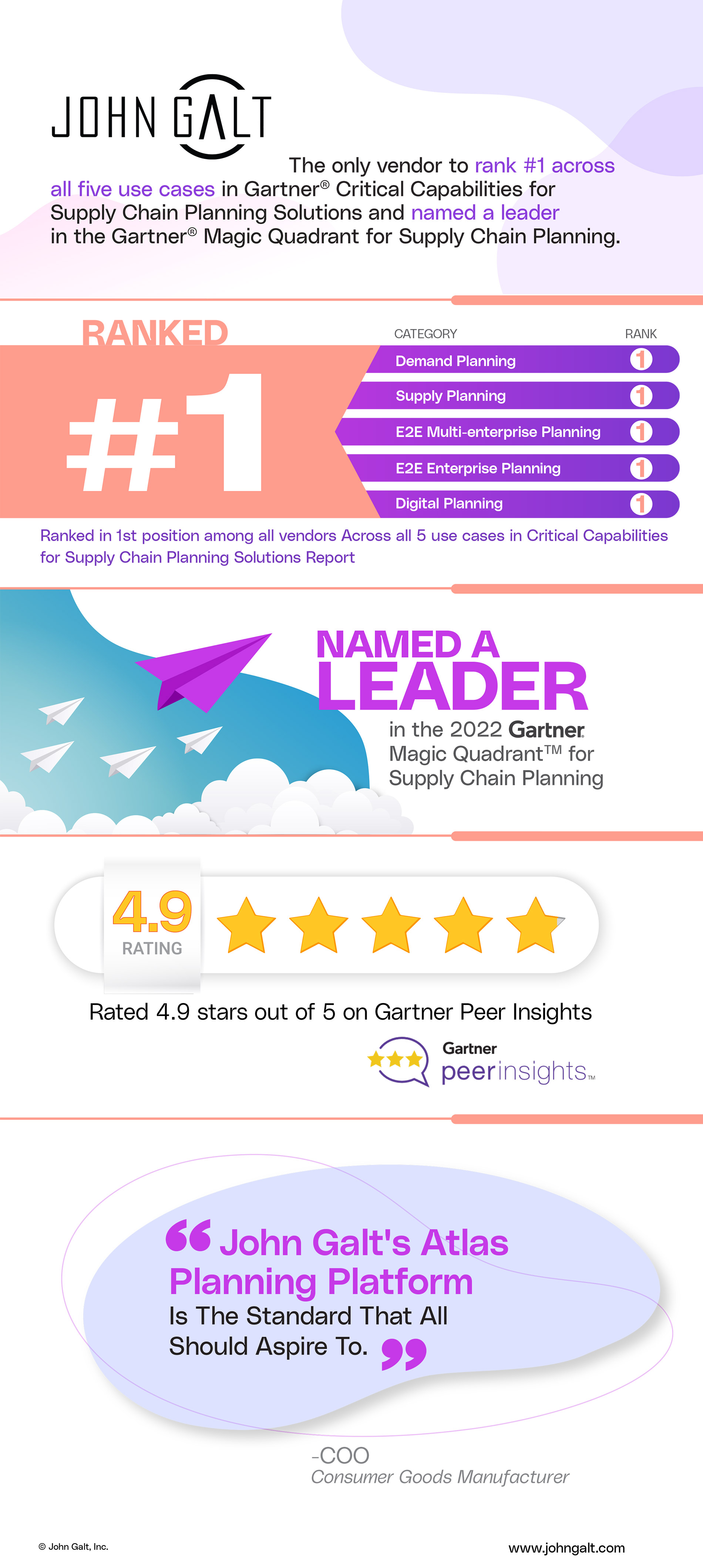The supply chain is an ever-evolving journey. This requires supply chain organizations to both focus on the critical challenges of today as well as ensure future success. This evolution requires a partner that can empower supply chain teams to grow, to transform and seize new opportunities. Recently we shared our views on how to interpret vendor comparisons. In this post we will dive deeper into the Critical Capabilities report Gartner publishes alongside its Magic Quadrant.
Before we jump in, we’re excited to share John Galt Solutions is the only supply chain planning software vendor to score highest across all five Critical Capabilities Use Cases examined by Gartner! But what does that mean? Let’s first examine what the Critical Capabilities reports are.
What It Is
The Critical Capabilities report is a comparative analysis that scores competing products against a set of critical differentiators identified by Gartner. The report benchmarks vendors across five use cases and 15 key capabilities that relate to the various stages of Gartner’s supply chain maturity model. The five use cases are Demand Planning, Supply Planning, E2E Enterprise Planning, E2E Multienterprise Planning, and Digital Planning. Each of these use cases represent varying levels of maturity starting from Demand Planning through to the advanced Digital Planning use case.
What the Critical Capabilities mean for supply chain planning
The Critical Capabilities methodology provides companies with deeper insights into a vendor’s products and service offerings, extending the Magic Quadrant analysis by directly focusing on the product/service offering to supply more detailed insights when making technology decisions.
The Critical Capabilities report helps companies easily compare products and service offerings against critical differentiators to support specific strategies – helping businesses understand which product is the best fit across common use case scenarios.
Why it matters to lead the scores in all five use cases for supply chain planning
Companies are each at different stages of supply chain planning maturity. Some are just coming off spreadsheets and may rely heavily on their ERP to drive the plan. Others are looking at machine learning and automation while more advanced supply chains are focused on end-to-end orchestration across their multienterprise network. Each of these requires a mix of capabilities to support their journey and strategy. As leaders evaluate systems to suit their desired planning maturity, it is important that they consider common use cases as a means to select an appropriate software solution for their needs.
John Galt Solutions, with its end-to-end supply chain planning software Atlas Planning Platform, stands out for ranking at the top of each use case. Meaning, regardless of where you are today, we are helping other companies like yours solve the same or similar challenges you face and have helped them progress along their journey.
Supply chain leaders need the right technology to make data-driven, confident decisions to act quickly in the face of volatile demand and supply uncertainty. We believe these results strengthen our position as a leading technology partner to support companies at all stages of their supply chain maturity, to solve today’s real-world challenges and to achieve transformational outcomes.
By connecting data across the end-to-end supply chain network and translating this information to actionable insights, planners gain the visibility and confidence needed to optimize strategies and maximize opportunities.




